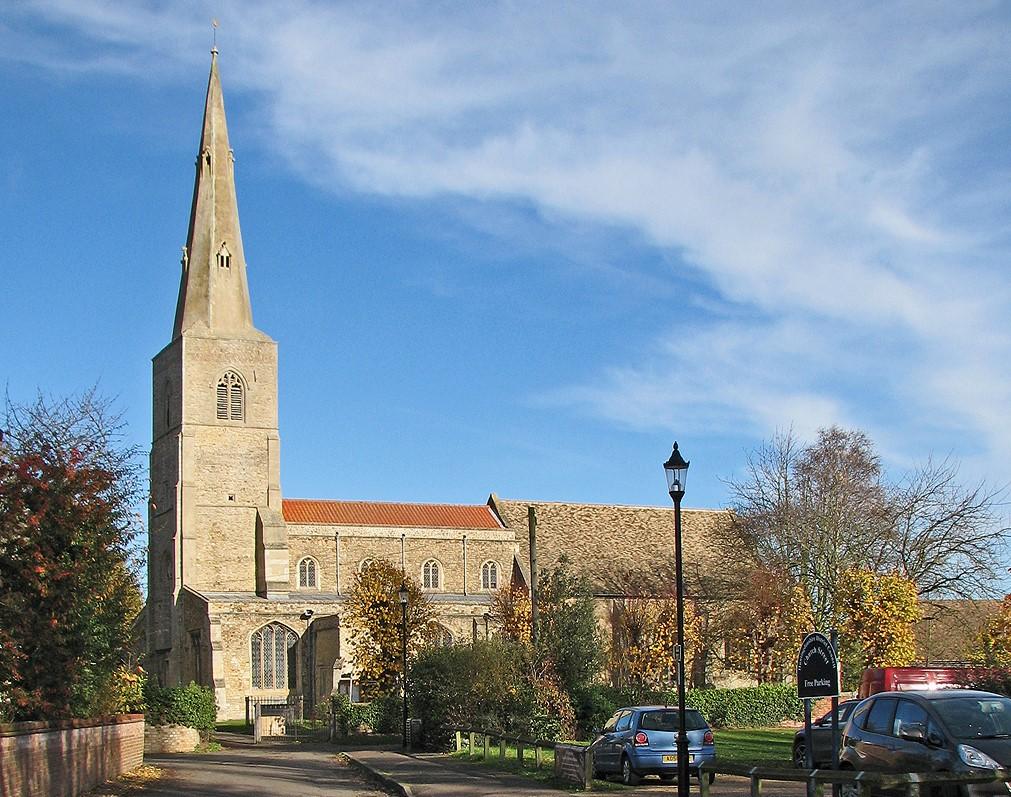St Ledger Chapel
St Ives, Cambridgeshire
There's an awful lot of historical water under St Ives bridge and chapel.

The tall, graceful spire is visible for miles around, it was used by sailors and others returning by boat along the river Great Ouse to the port of St Ives as a welcoming landmark, and it may even have had a lit beacon to aid their way.
Fenstanton, Cambridgeshire
Lying on the Via Devana, the Roman road that linked the army camps at Godmanchester and Cambridge, Fenstanton was the site of a Roman villa. It is also in the Domesday Book. The church was built on the highest ground, just 13 metres above sea level. It has stood for more than 700 years, with parts dating from the 13th century.
The chancel was built between 1347-52, and is an outstanding example of Decorated architecture; the beautiful tracery of the east window with its seven tall lights is mentioned in many guidebooks. The rest of the church dates from the 15th century.
There are wonderfully carved corbels and wooden angels supporting the roof of both north and south aisles. It is rare for angels to be depicted with their legs revealed (on the south side)!
Lancelot ‘Capability’ Brown, the famous landscape architect, owned the Manor House in the village and was buried in the churchyard. It is not thought that he lived for very long in the house, and it is unknown exactly where in the churchyard he is buried. However, there is a gravestone and a monument on the left wall of the chancel. The lady on the right hand side of the chancel leaning over an urn, is also a member of the Brown family.
On the west wall of the nave are a tablet and other mementos devoted to John Howland, the son of Henry Howland who sailed in the Mayflower in 1620. The exhibits include the Mayflower ‘compact’, and a drawing of one of the original houses, now known as Howland House, in New Plymouth, Massachusetts. Descendants of the family include Franklin Roosevelt, Richard Nixon and Winston Churchill.
In recent years the church has commissioned two new works of art, both by Ian Thompson. A hanging over the north aisle altar portrays symbols of St Peter and St Paul; its embroidered silk changes colour as the light shifts. In the south aisle, a new millennium window shows episodes from the life of St Paul; the blinding vision on the Damascus road, an open book of his letters, a boat and waves representing a shipwreck, and the viper cast into the flames.

St Ives, Cambridgeshire
There's an awful lot of historical water under St Ives bridge and chapel.
St Ives, Cambridgeshire
St Ives Free Church is one of the oldest nonconformist churches in the country, tracing its history right back to the 1630s when Oliver Cromwell lived in the town for five years.
St Ives, Cambridgeshire
Our building represents over 200 years of Methodist presence in St Ives with fascinating wartime history.